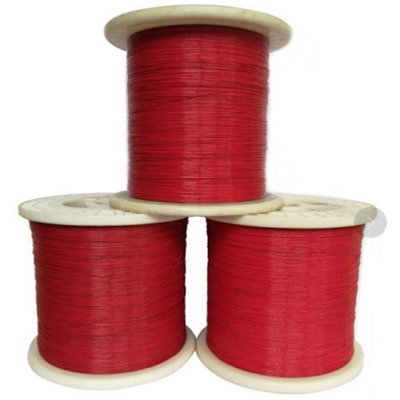For the sensor manufacturer, the etched wire is very important. The etching technology reduces the lubricity of the fluoropolymers such as PTFE, FEP, and other Teflon wires, so as to improve the bondability of the wire. But how to etch Teflon wire? Today, the author would give you a flull introduction about the etched Teflon wire.
What is Etched Wire?
The etched wire is a type of wire that has been etched. Etching is a professional chemical process that is great for the wire in all aspects. It not only enhances the wire’s ability to withstand exposure to harsh chemical and high-temperature conditions but also extends the wires’ flexibility and toughness. For the electric suppliers, this wire would help reduce the replacement cost on cable.
Four Kinds of Teflon Wires Can Be Etched
Teflon wire is the ideal wire to be etched. The etching could make the Teflon wire can be easy to attach to other metal components. The teflon wire can be divided into PTFE, FEP, PFA, ETFE. If the teflon wire is big, the etching is neceaasry.
PTFE Wire
PTFE is an excellent non-stick material, but about when you plan to glue it to the surface of another material. You need to etch the PTFE wire.
What is Etched PTFE Wire?
As mentioned above, etching is performed by placing the PTFE in a sodium solution. After the chemical reaction, the new etched surface of PTFE has pretty high energy.
Because of the extremely high energy, the water vapor, oxygen molecules, and hydrogen would fly in to take the place of the fluorine molecules and restore the electrons, once the ETFC is exposed to the air.
During the restoration process, it would form a reactive film of molecules on the surface that enable adhesion.
FEP Wire
FEP, a great non-stick material, has excellent chemical stability. It allows a 200℃ operating temperature. It is commonly extruded as both an insulation and jacket material for wire and cable.
PFA Wire
PFA is one of the most lubricious(slippery) materials. On the other hand, such lubricity reduces the bonding ability of the material. Therefore, PFA is another material to needs to be etched.
ETFE Wire
ETFE is a rugged thermoplastic with an excellent balance of properties. It not only forms a relatively high durable coating but also has great chemical resistance.
How to Etch Teflon Wire?
The etching process works under a sodium solution. First, place the fluoropolymer wire in a sodium solution. The chemical reaction between sodium with fluoropolymer would remove fluorine molecules from the carbon-fluorine backbone of the fluoropolymer leaving carbon atoms that are deficient in electrons.
Once the etched surface is exposed to the environment, the water vapor, oxygen molecules, and hydrogen provide the possibility of restoration of the electrons. This restoration would lead to a group of organic molecules that enables adhesion.
Will Etching Change the Properties of My Wires?
No, it won’t change the properties of your wires. The etching process only works to a depth of a few angstroms, thus it can not affect the properties of the wires. However, after the etching process, the surface of the wires would turn into a brown color. The lubricity also gets a reduction.
How is the Etch Tested?
After getting etching, the wire should get a test that to evaluate the bondability of the etched surface to other materials. The test adopts the goniometer and microscope to measure the angle of a sessile drop resting on a flat section of the surface of the etched material. This measure is used for indicating surface wettability.
Actually, the chemical etching could make more contact between the etched surface with the liquid. Therefore, the greater contact with the liquid droplet, the lower contact angle they have, the greater bondability of the surface.
Conclusion
Etching is the common and practical method of enhancing the bondability of the wire. Benefit from the etching, he etched Teflon wire not only has strong bondability with other material but also could remain the properties of the etched material.









